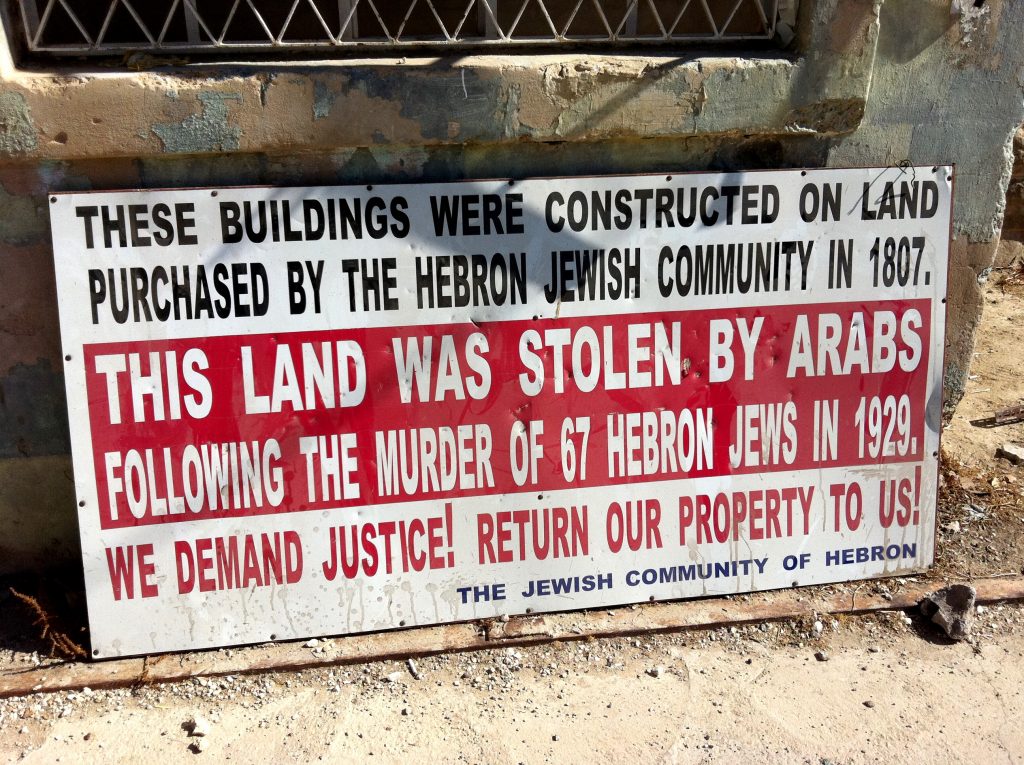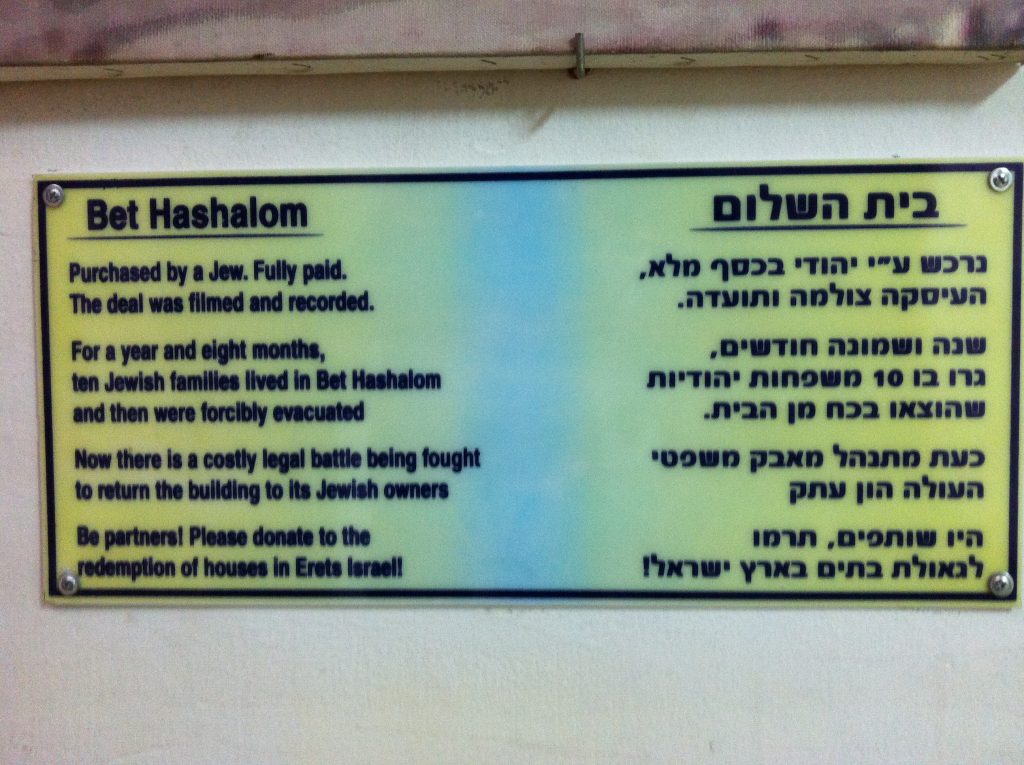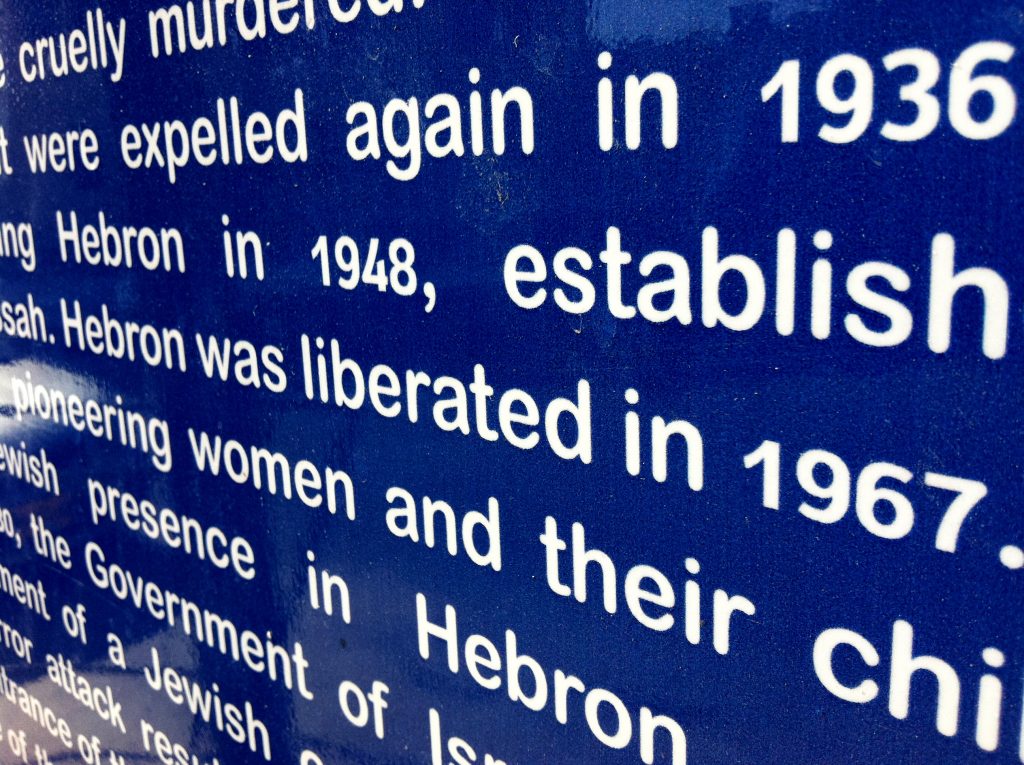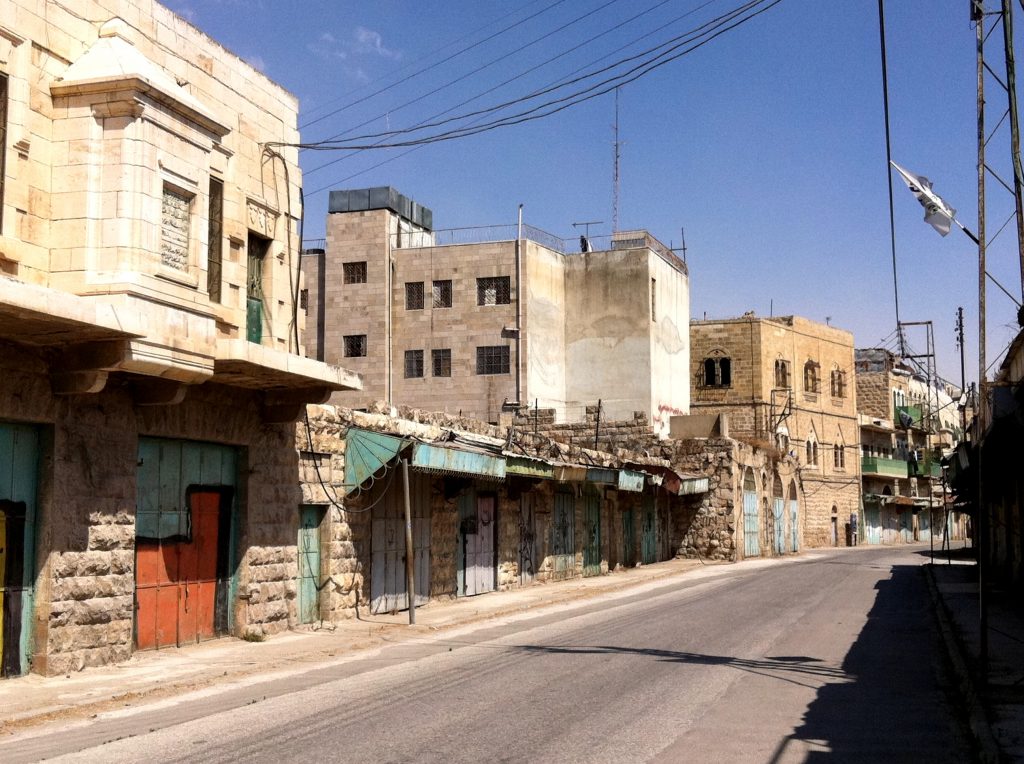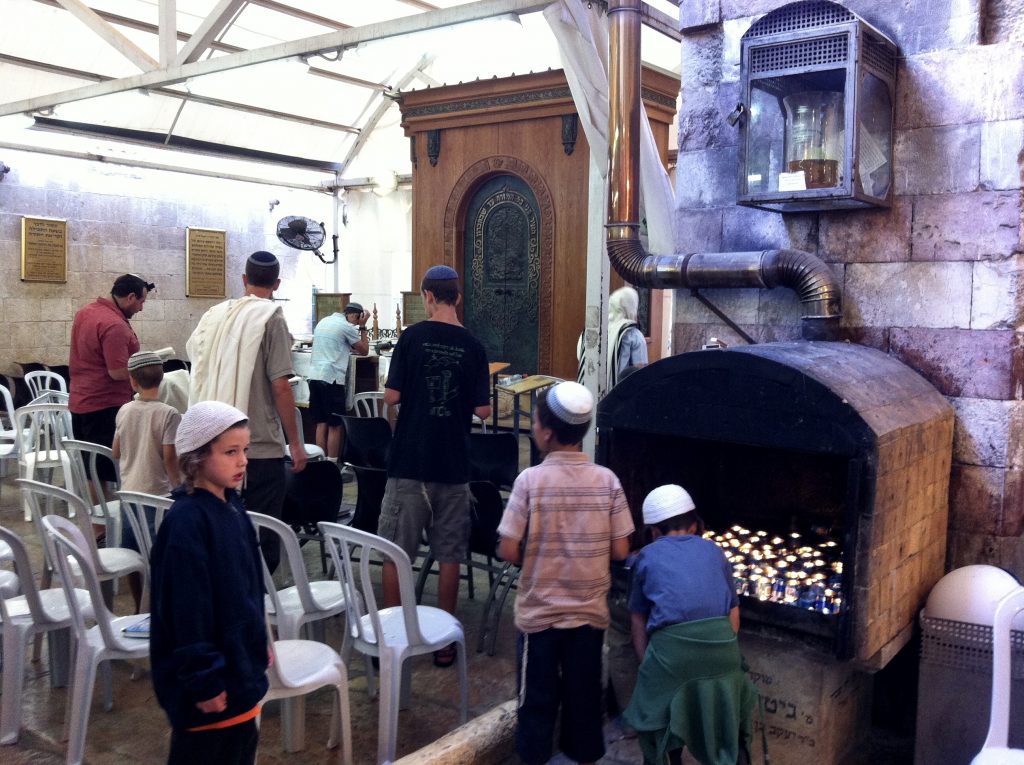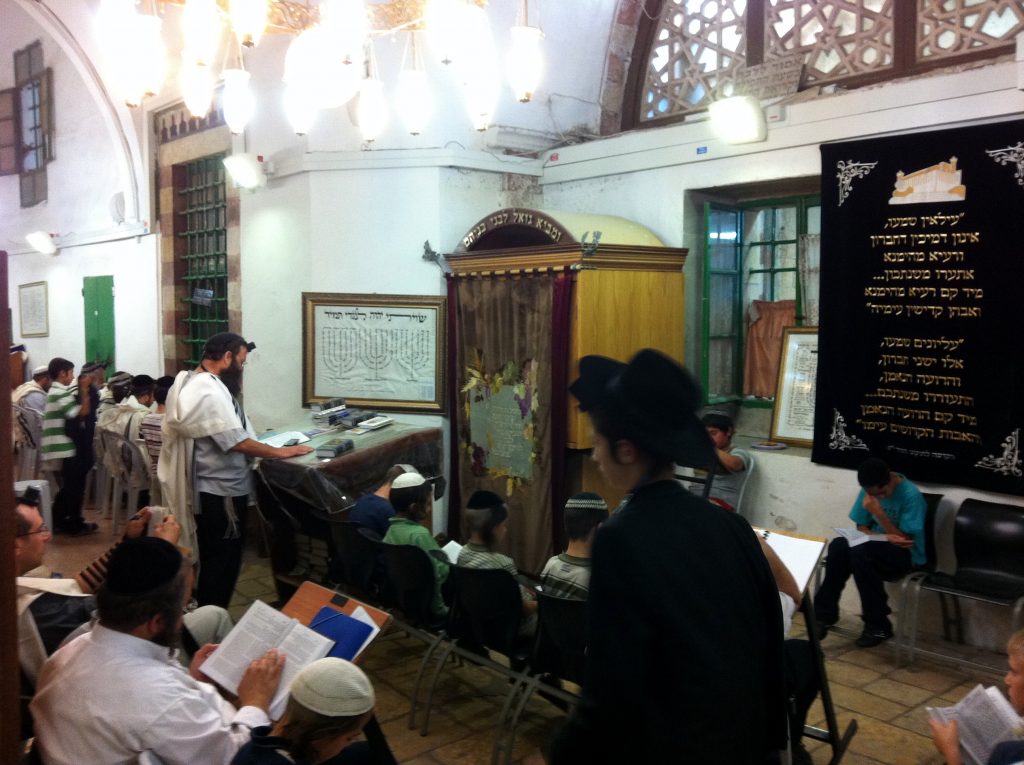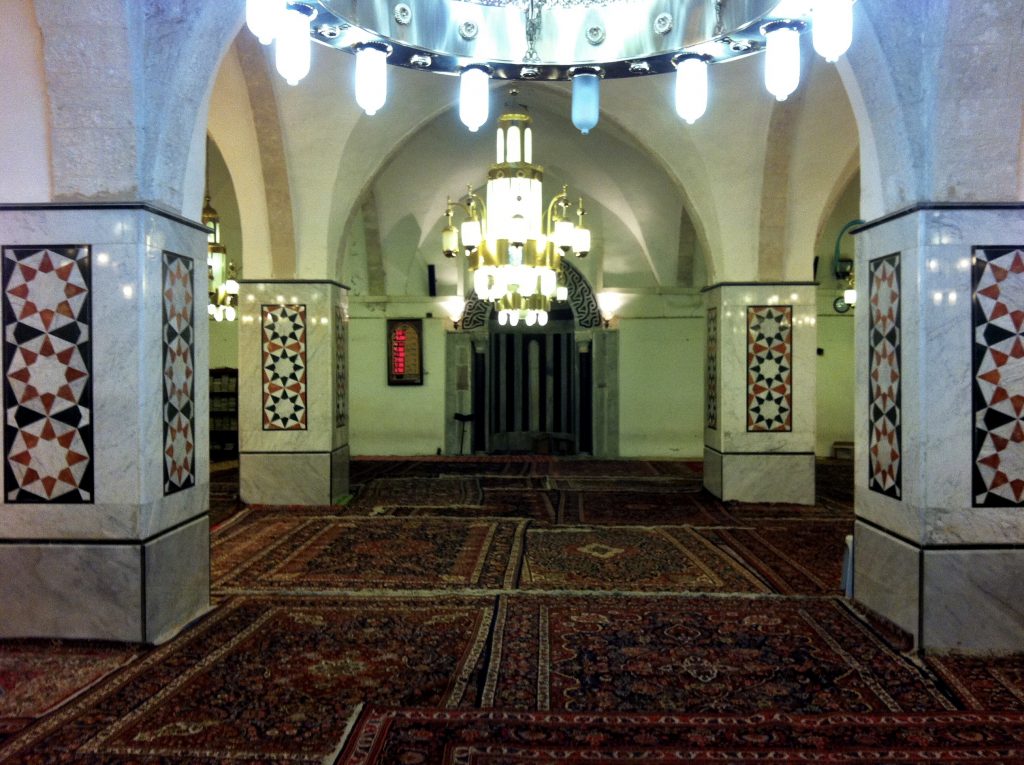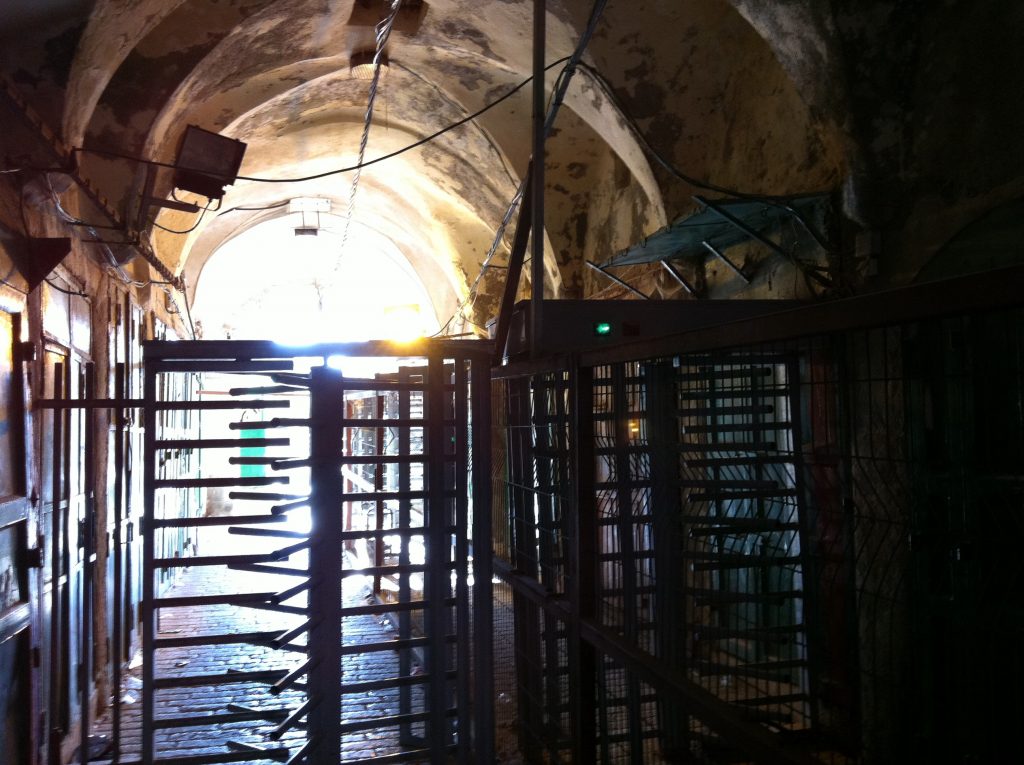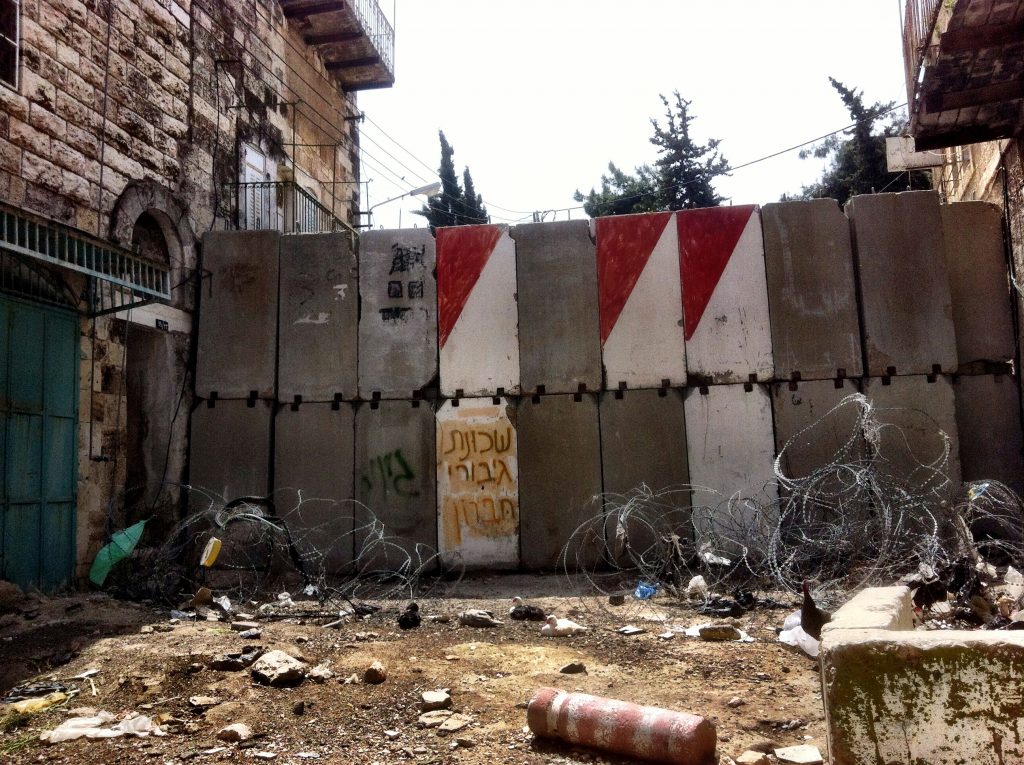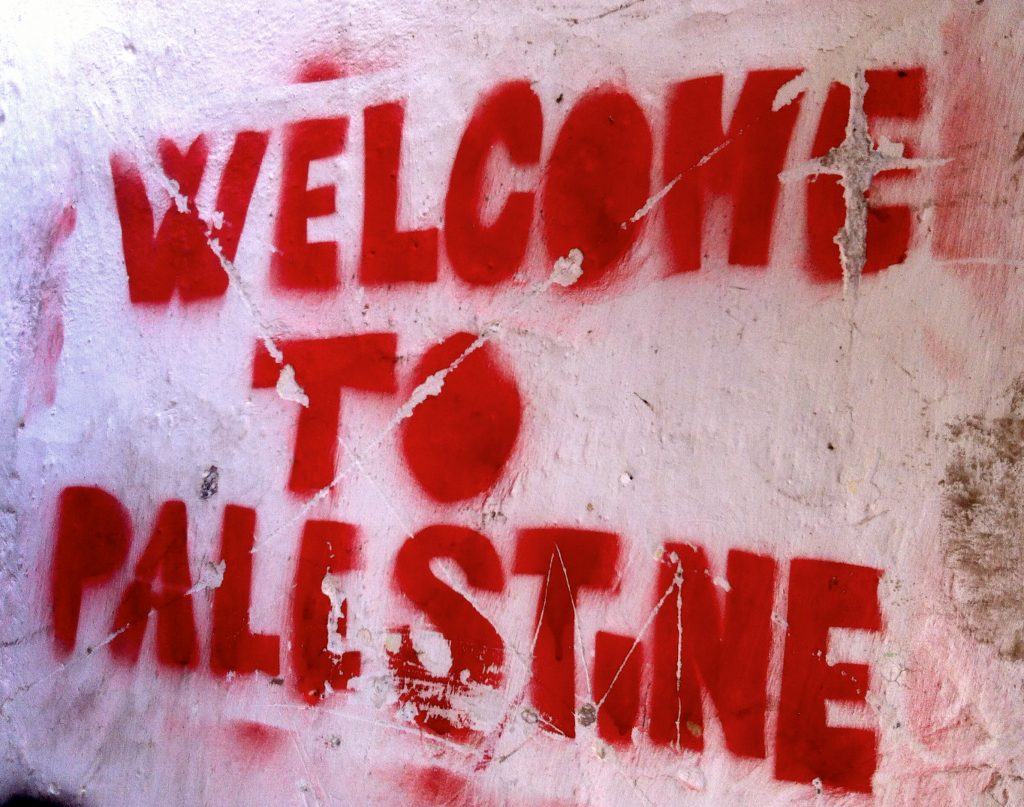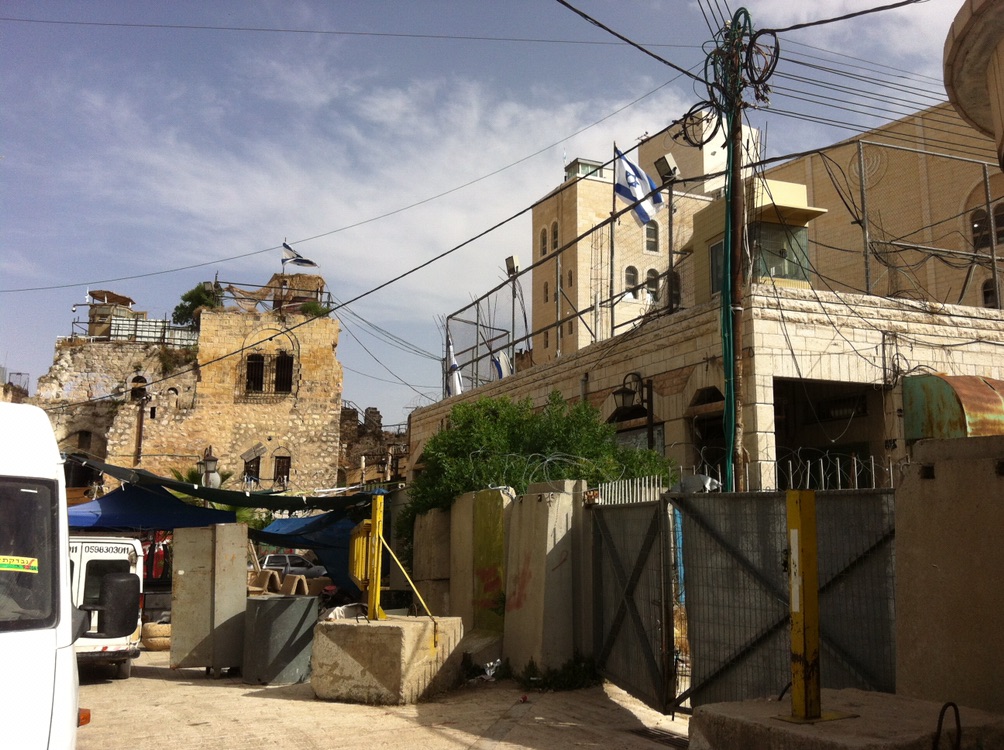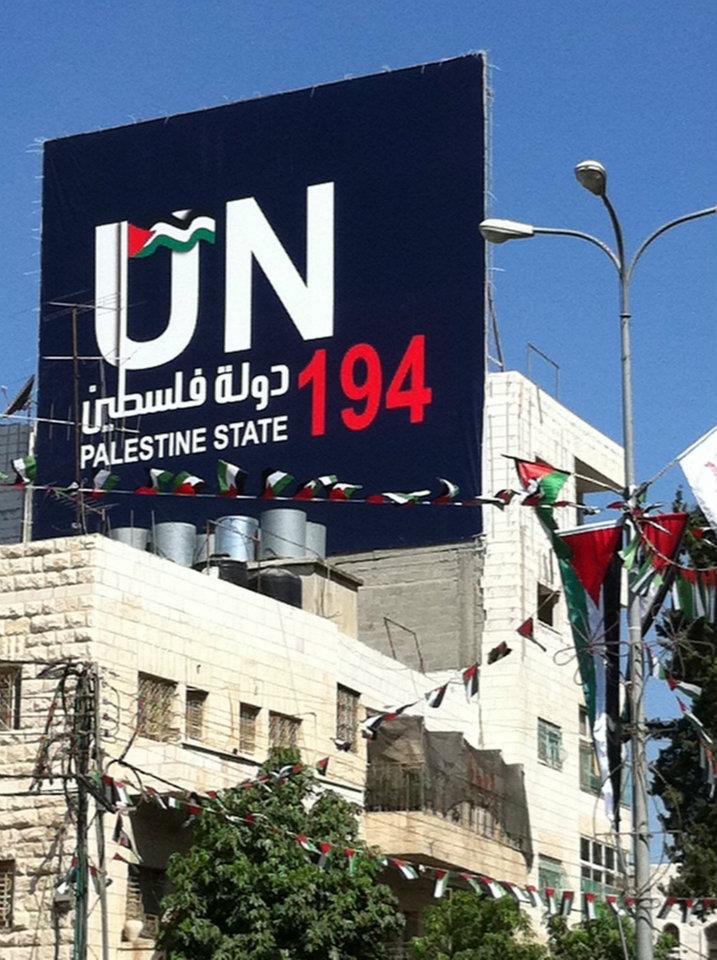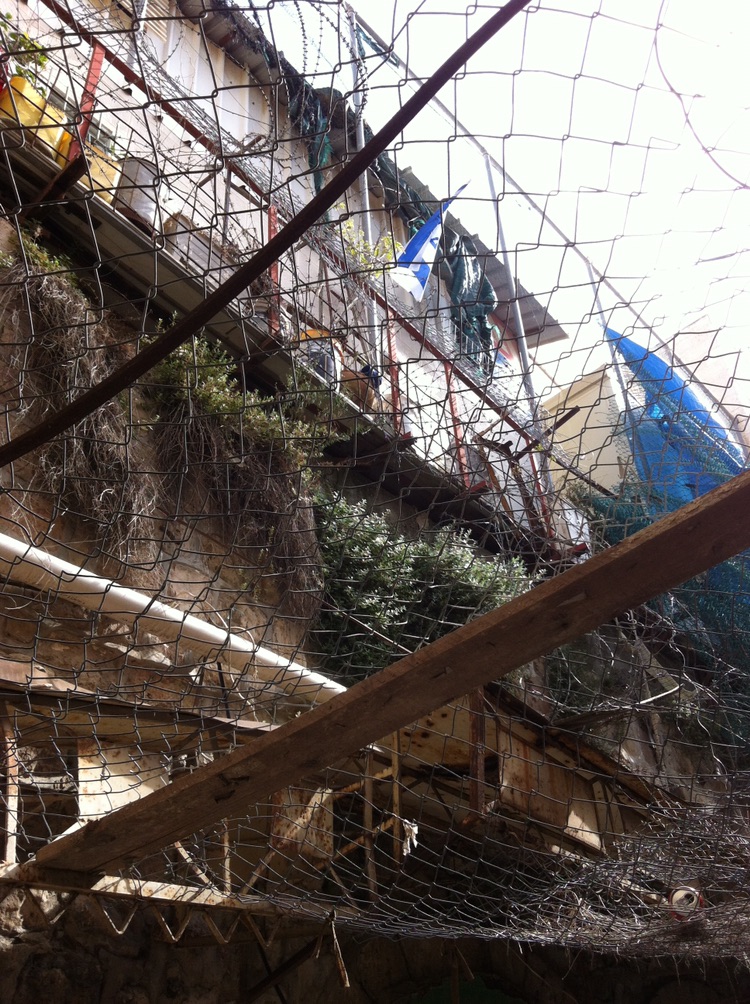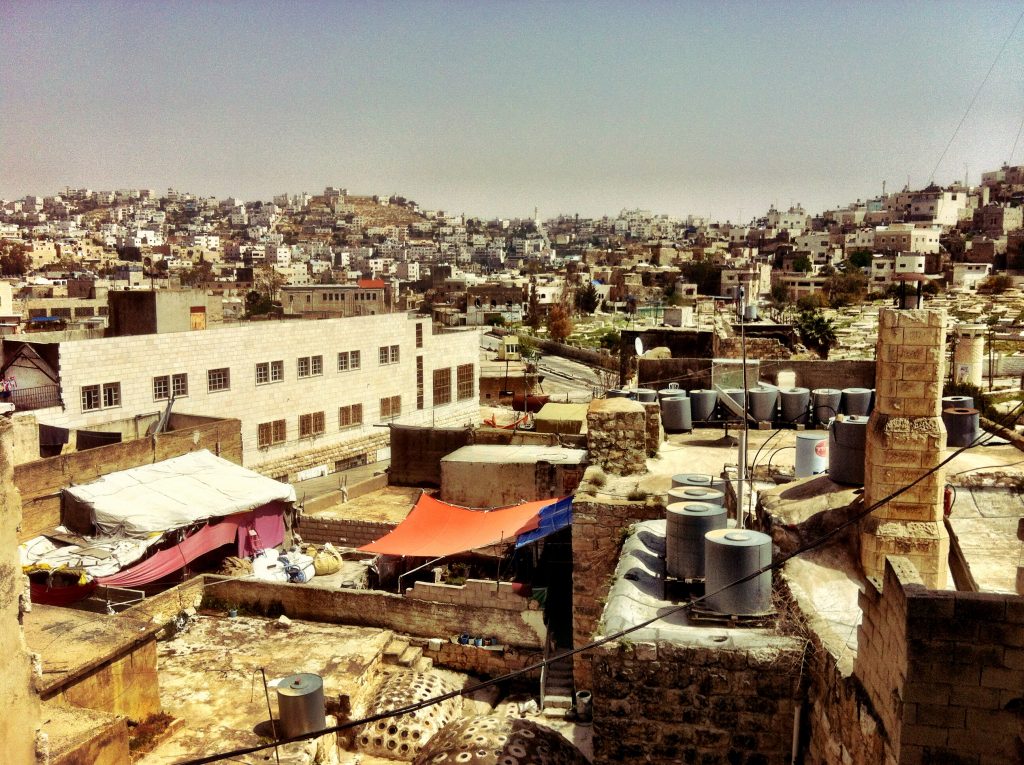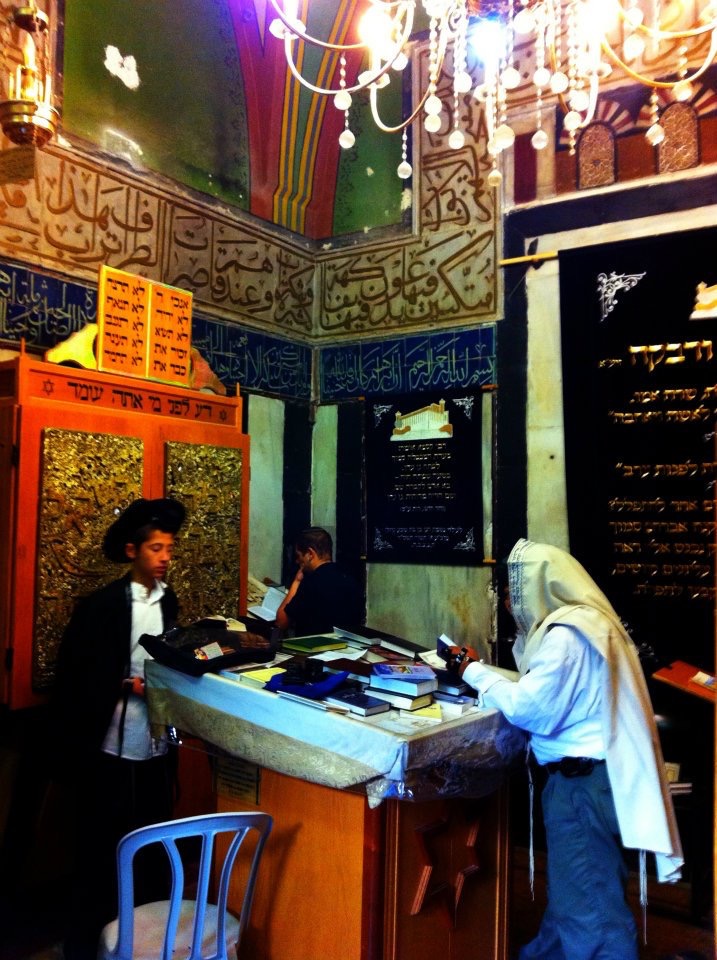
i took a day trip from beer sheva to hebron. hebron is the largest city in the west bank, was an important site in ancient history, and is currently right on the fault line that is the israeli-palestinian conflict. that is to say, tensions are always high, and there is perennial violence. it is about 2 hours north of beer sheva by bus. and when i say bus, i mean bullet-proof settler bus, that stops at every gated israeli settlement along the way, even the ones with 3 buildings (the 3rd being the bus stop) on the tops of mountains. hebron is where the tomb of abraham (yeah, that abraham!) is, making it a venerated holy site for both jews and muslims. the tomb is underground, topped by a huge edifice that contains both a synagogue and a mosque. separated of course. both were nice! hebron was actually also the capital of israel a few millenia ago during the tenure of king david, but for the last thousand years it has been almost entirely populated by arabs. in 1929 a group of 60-some jews were very unfortunately murdered by a mob of arabs. thus, small numbers of hard-core zionists (arguably the most extreme and religiously ideological on the spectrum) targeted hebron as a site for settlement after the west bank (or judea and samaria, as they like to say) was occupied (or liberated, as they like to say) by israel in 1967. also, because some of them view the area as the true heart of israel (and thus of central importance in the cosmic narrative) because of its importance during the time of david.
in 1994 an american-israeli settler (and a physician, no less :/) massacred dozens of muslims and injured over one hundred more in the mosque side of abraham’s tomb. to prevent retaliation against the 500 or so jewish settlers in the old city, the israeli military partitioned the city into 2 zones, h1 and h2. initially 30 000 palestinians lived in h2 (the jewish section), although they soon were forced out by harassment from the settlers and the military, countless checkpoints, and restrictions like curfews. so now what you obstensibly have is about a quarter of the land area of the city of 300 000 – 400 000 (including what used to be the main road through the city) that is a deserted urban wasteland of empty shops and crumbling homes, encircled by huge cement walls and barbed wire, populated only by a couple small enclaves with a total of 500 settlers, 2000 israeli soldiers to protect them, and probably 10 times that many israeli flags flying absolutely everywhere.
(not that the other side doesn’t have irrational biases either, but)… there are all kinds of “historical” placards in h2 (in english), describing the variety of ways that the arabs have insulted judaism in the city throughout history. one talks about how they disrespected a jewish cemetery by allowing a farm to built beside it. literally across the street, there is an overgrown arab cemetery with an israeli army bunker built in the middle of it, and huge spools of extra barbed wire stacked on top of the graves. not that graves are what’s really important in this situation, but its symbolic of the hypocrisy. seriously, the aura of the place was so depraved that i started feeling nauseous. the arabs can’t come near the settlers, and the settlers can’t leave h2 by decree of the israeli government. probably in everyone’s best interest. so i walked around there for a while, and then headed through the checkpoints into the main arab part of the town. i was vividly reminded of my days in egypt, what with all the higabs, twisty streets of the old city, getting a guy who sold me a 25 cent coffee to reteach me the numbers in arabic, enjoying some pleasantly priced (less than $1) falafel and custard stuff with honey, and trying to avoid being conned by all these people eager to show you their house that was recently destroyed by israeli water cannons. but you can only see it if you “donate” a chunk of cash – they probably make so much money like this. so palestinians can be hypocritical too, can’t we all. but the abuse is real – it got so bad that the israeli government and the palestinian authority jointly decided that there needed to be a special force of international observers, called the “temporary international presence in the city of hebron,” or tiph. these (mostly scandinavian) guys and gals can be seen wandering around in their special uniforms, taking complaints from palestinian shop owners about abuses and sampling dried fruit in the old city.
after a number of hours i went back to h2 to catch my bus. i got there early, and eventually was approached and started talking with one of the settlers, as he was finishing playing some kind of mesmerizing game on his iphone. just like me. he was a 27 year old guy from boston, named israel (original, eh?). another tourist bro walked past, engrossed in lonely planet’s “israel and the palestinian territories” guidebook. that was a catalyst for an intense conversation with israel. he noted the title of the book and started laughing. i asked him what he thought of that, and he said that the rest of the world doesn’t understand that god gave the land – all of the land – to the jews. when i asked what about the arabs, he said that that he actually doesn’t mind if they stay. “we shouldn’t give them civil rights in society, but that doesn’t mean they can’t have human rights here.” hmmm. he invited me into his house for coffee, and his mother was setting up for the big evening rosh hashanah meal (its jewish new years eve), so we helped her set the table. super nice family (to me).
this niceness contributes to but one of the many reasons these tensions have become so intractable – american tourists (unfortunately [in my opinion] many of them fundamentalist christian dispensationalists who are [again, in my opinion] far too obsessed with eschatology) come in on custom settlement tours led by american, english-speaking guys like israel (he’s a tour guide – there’s really not much else of an economy when you’re living in an isolated ideological settlement and can’t even interact with the locals). their luxury coaches are waved through the checkpoints, and they only drive on the israeli roads that the typical palestinian isn’t allowed to use. they become extremely well versed in one side of the story, but they never even set foot outside the separation barriers to hear the other side. and many don’t even know that there are actually christian palestinians on the other side of the barbed wire (not that someone’s religion should influence your ability to empathize with them). and then they go home to their churches, and as “experts” on the “holy land” due to their “two week tour” implore people to “stand with israel at all costs” because she is in a “cosmic battle” of “eternal significance” with “hostile enemies.” and they wonder what on earth would compel palestinian youth to periodically throw rocks. ahhhh no, i’m starting to rant. sorry. but if you consider yourself a proponent of this perspective, i would challenge you to go to hebron and, after visiting both sides of the barrier, ask yourself which side seems the most hostile right now.
to be fair, and to wrap up: hebron is an extreme case. not all settlers are driven purely by ideology. heck, some of the people living in the settlements of east jerusalem aren’t even necessarily pro-settlement: they’re just living there because the government subsidizes the housing. and a significant proportion of israelis are anti-settlement, many even fiercely so. so don’t get me wrong – i am not anti-israel. but this occupation is unequivocally terrible and must end.
